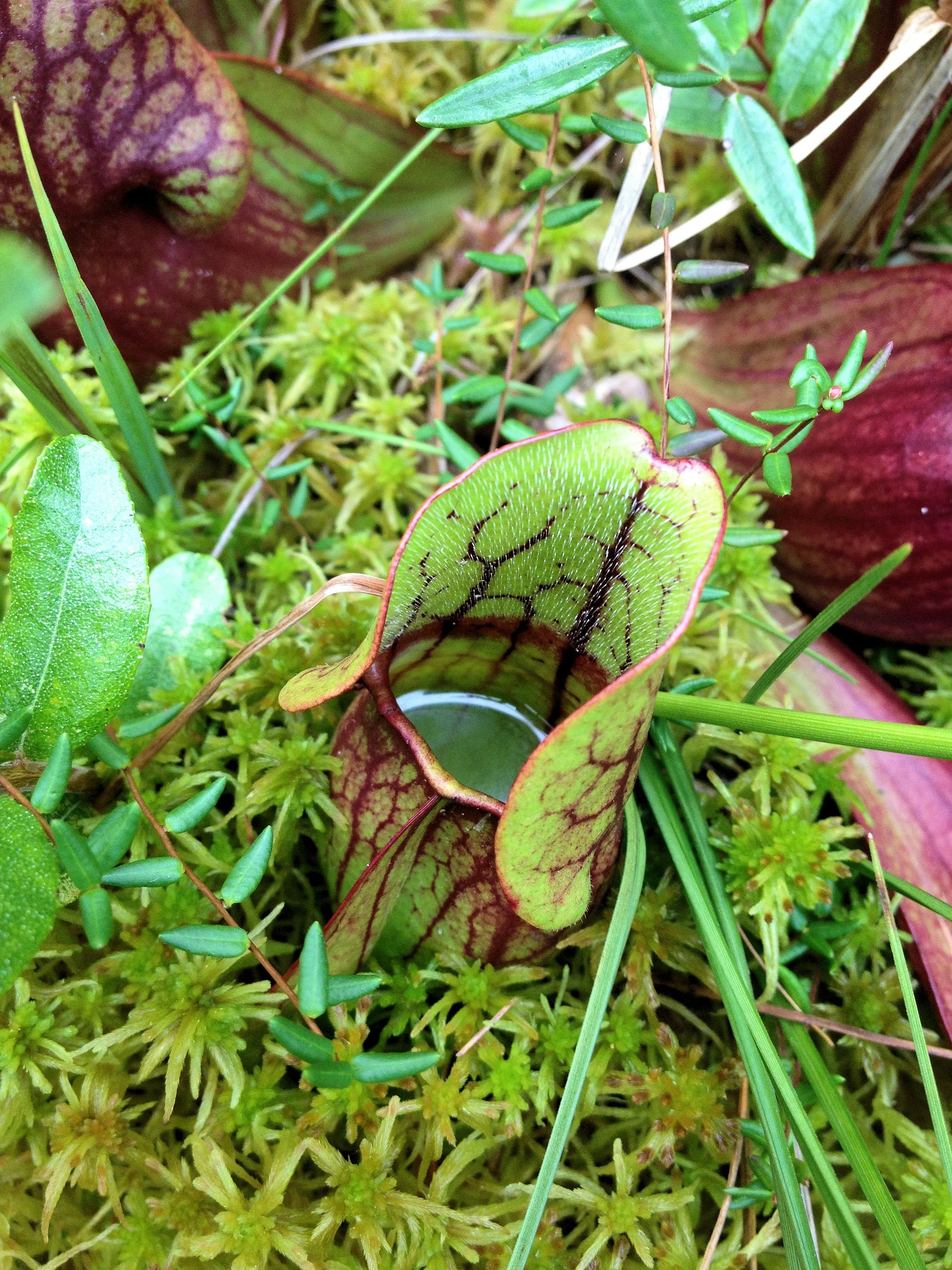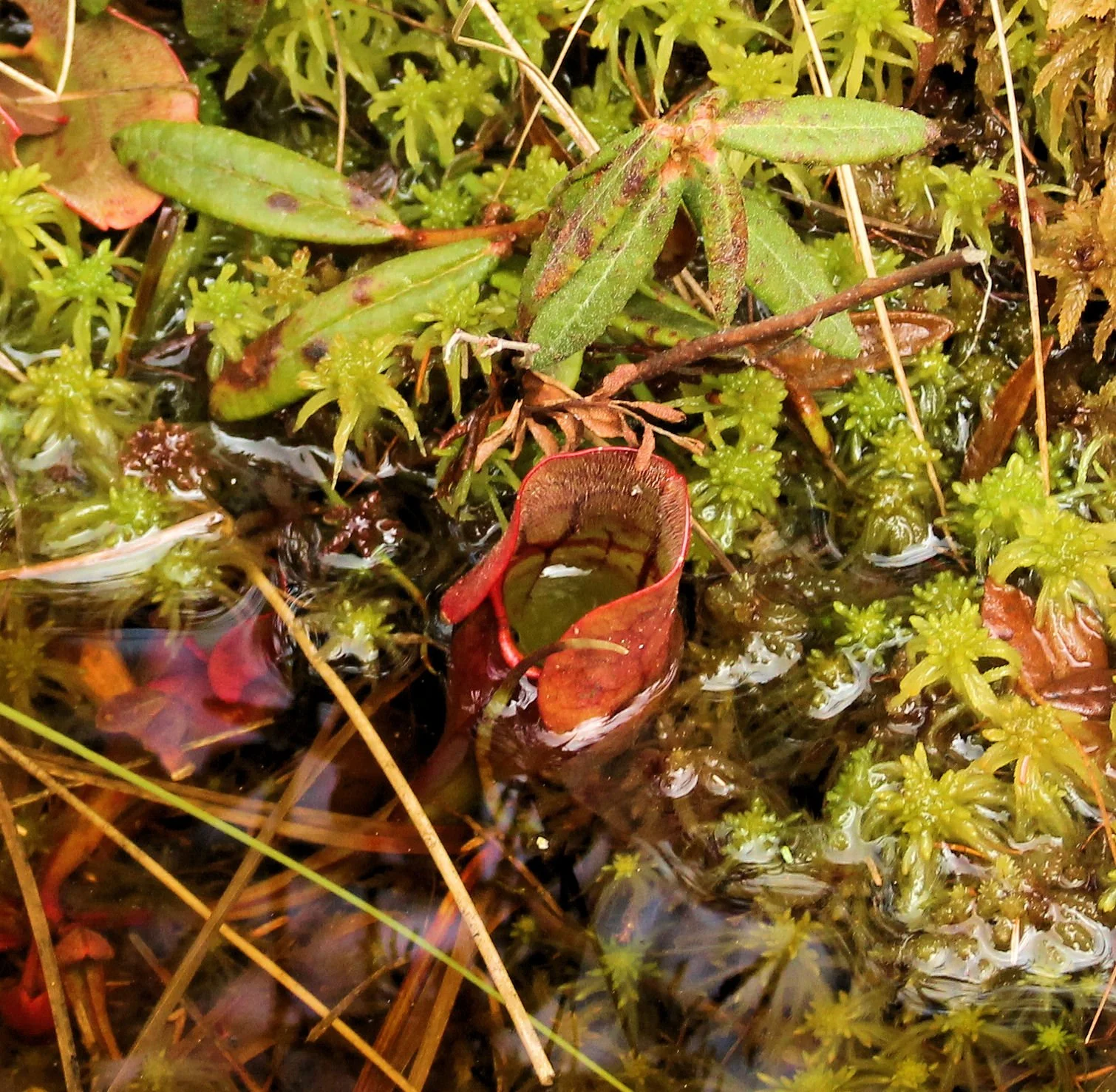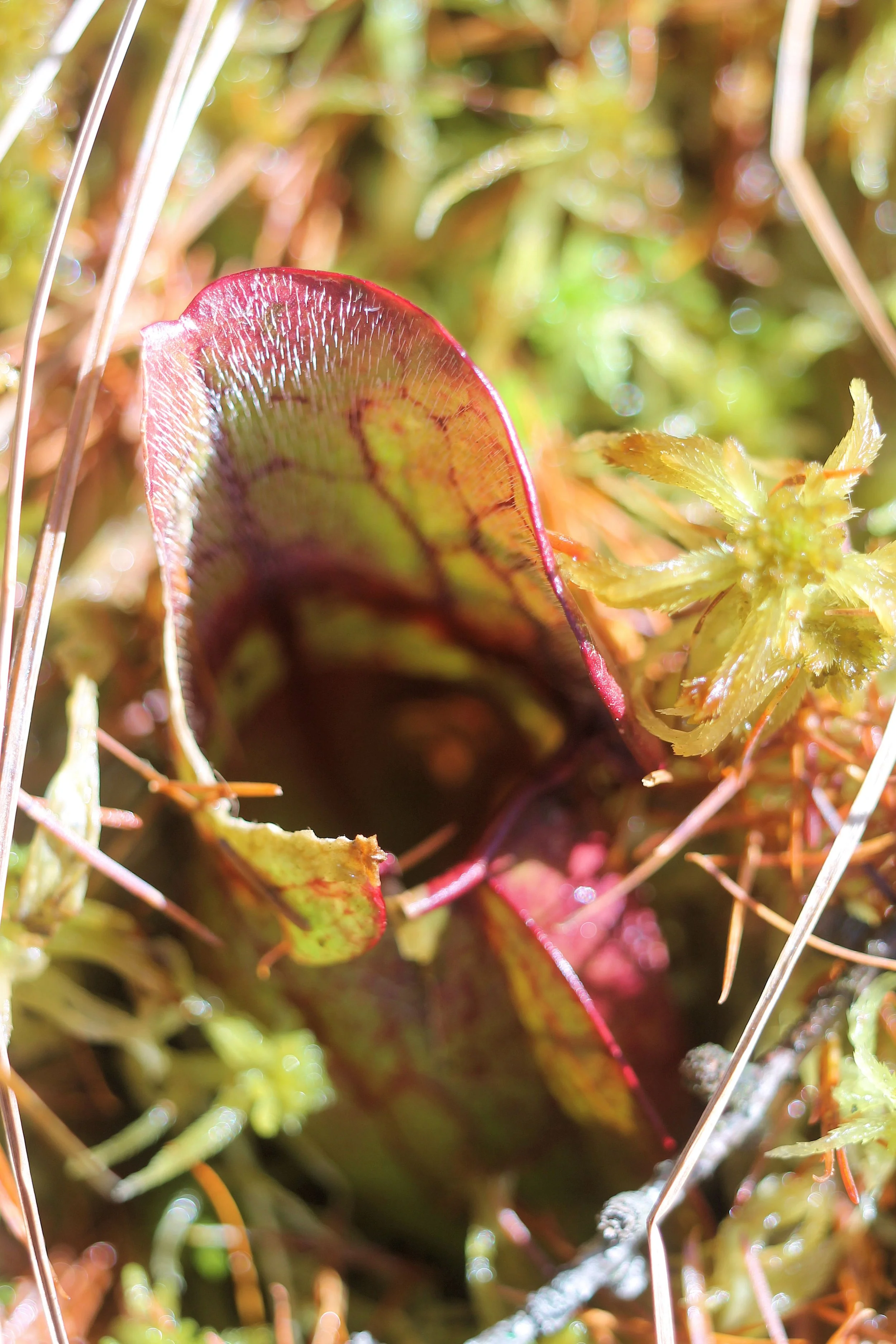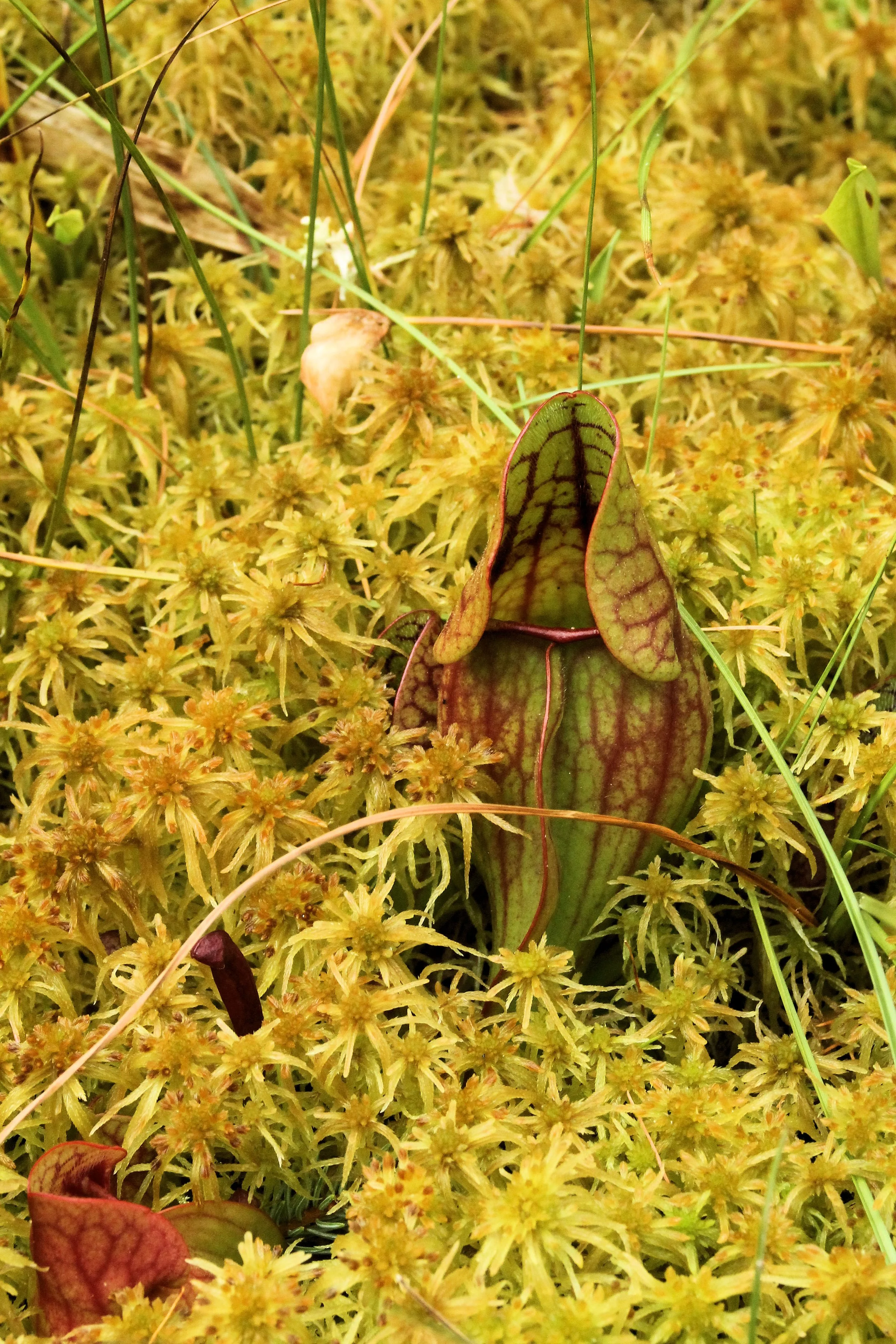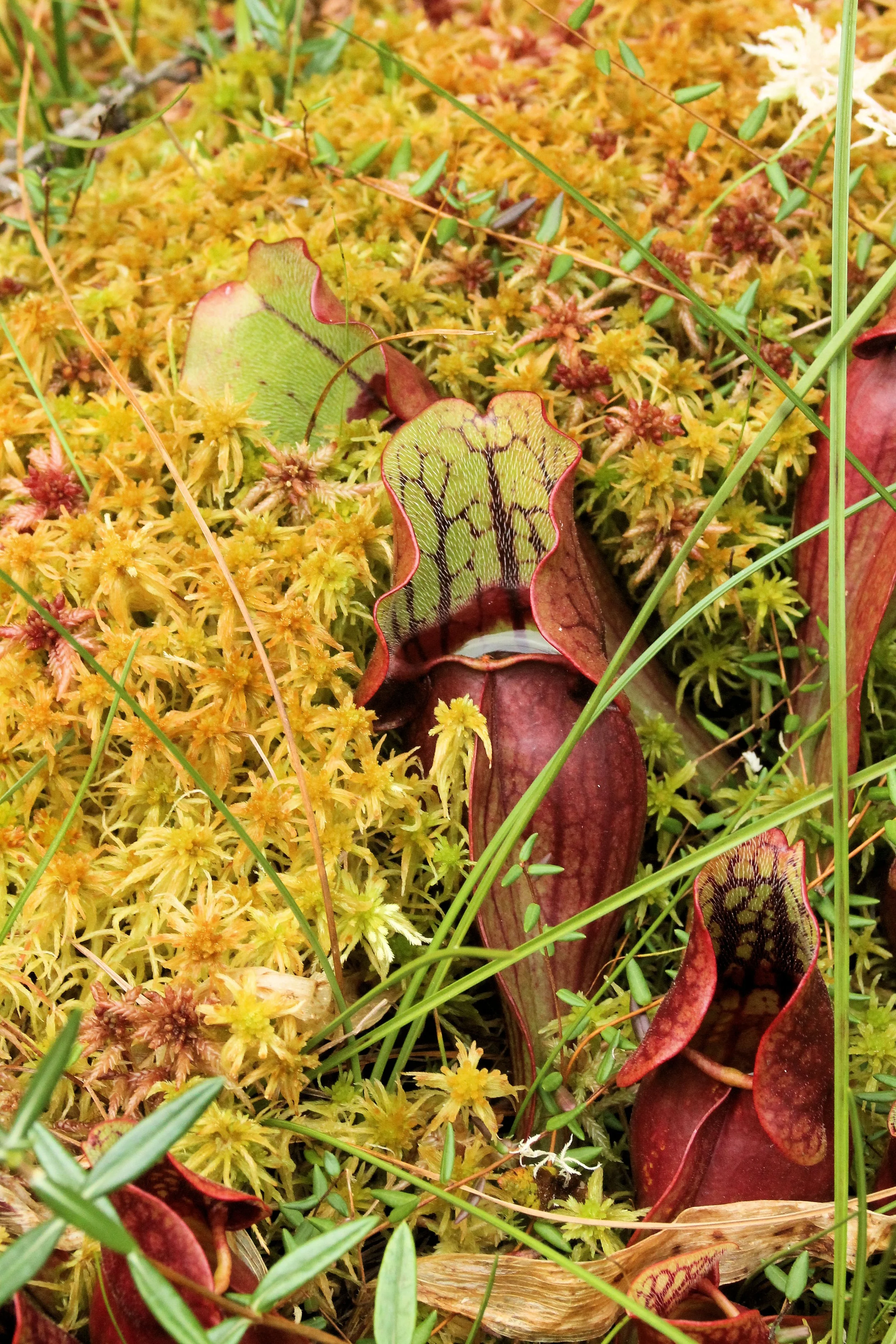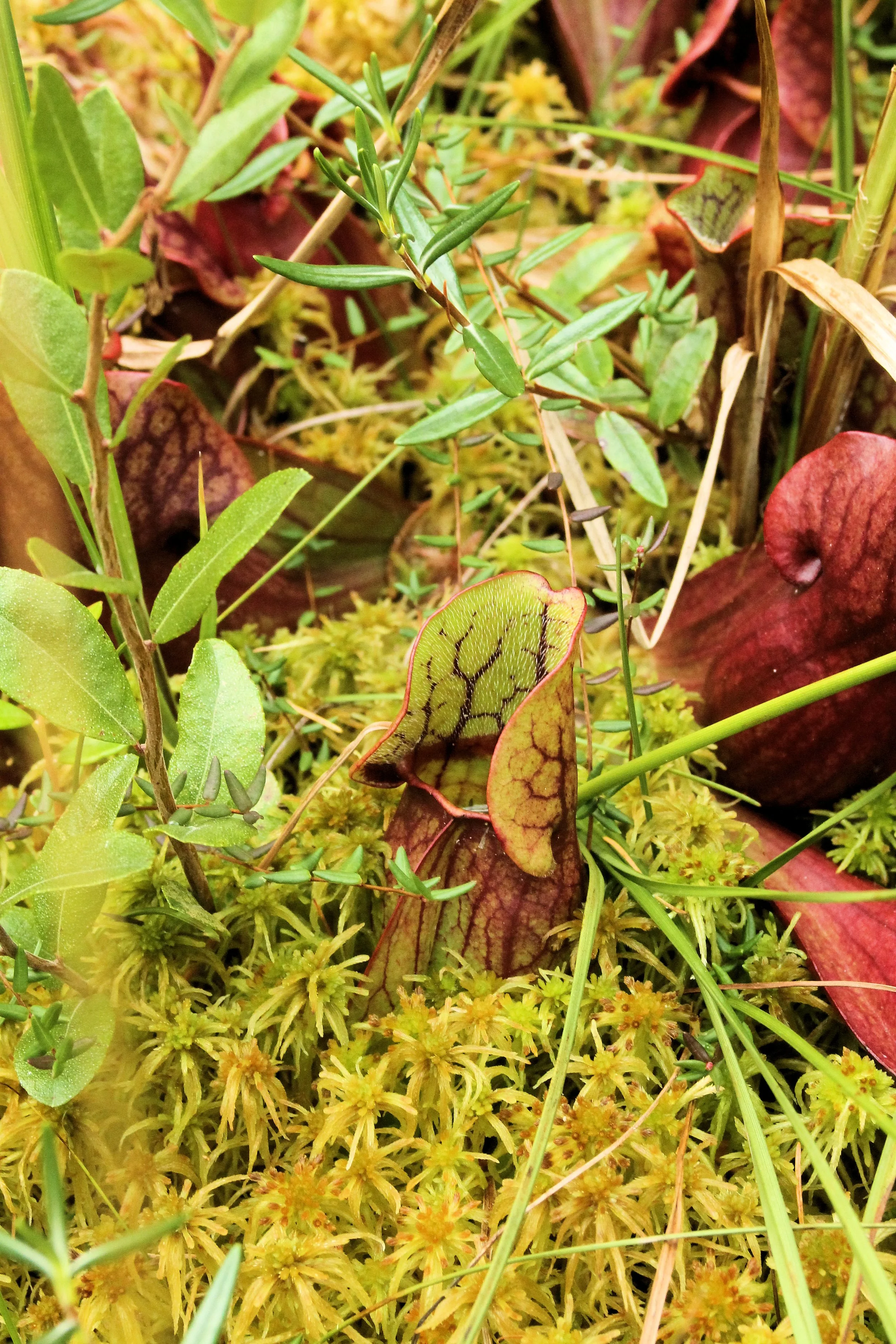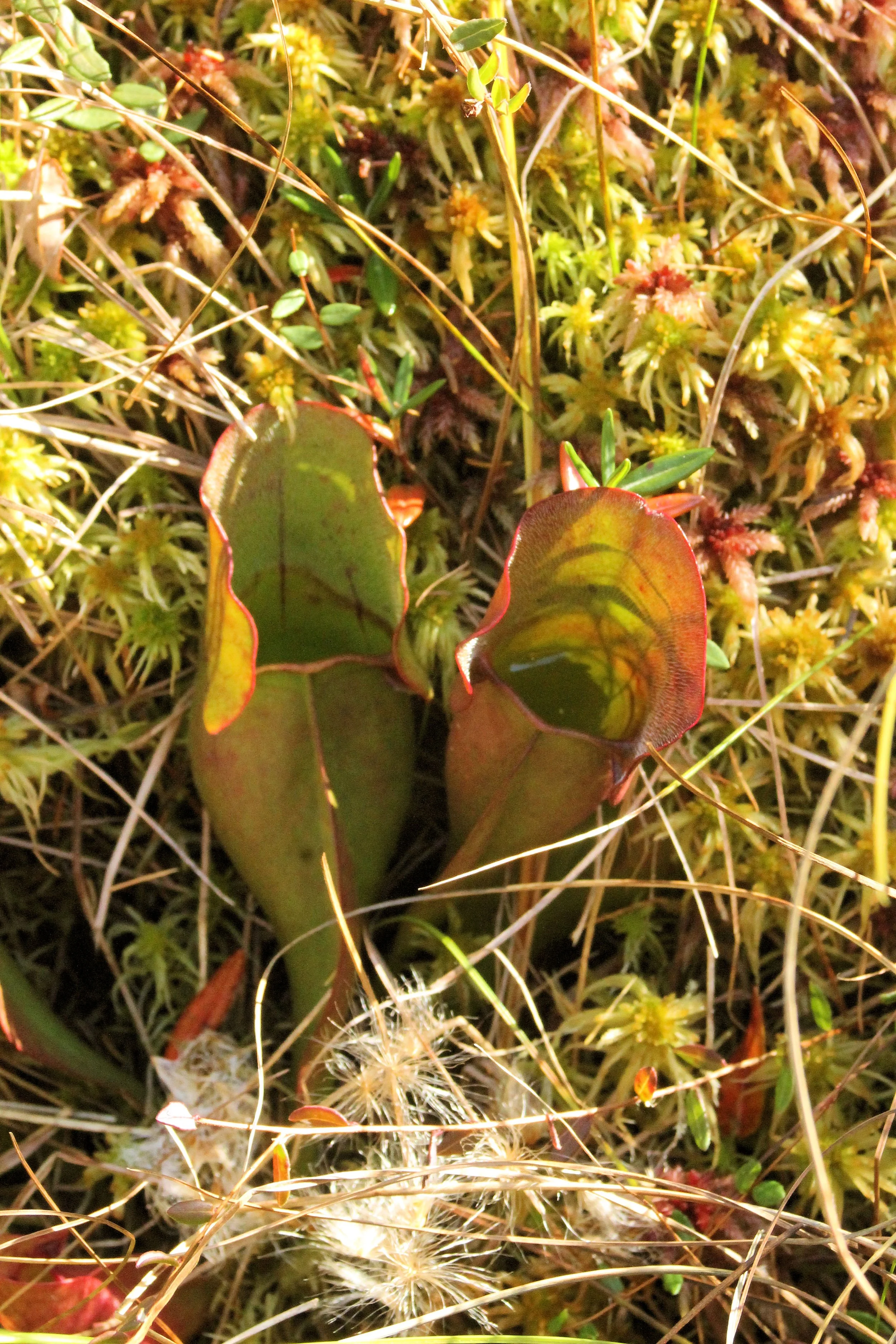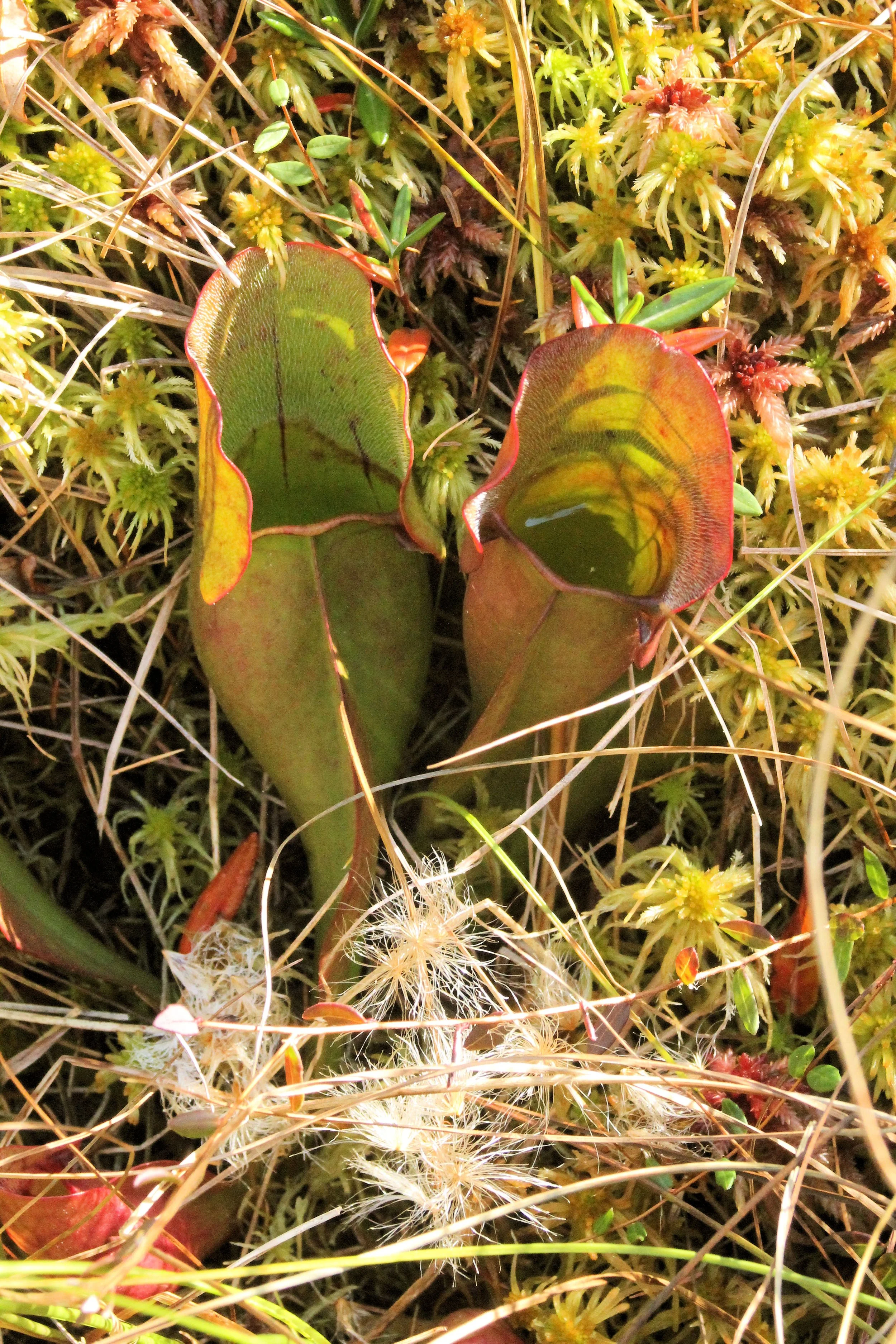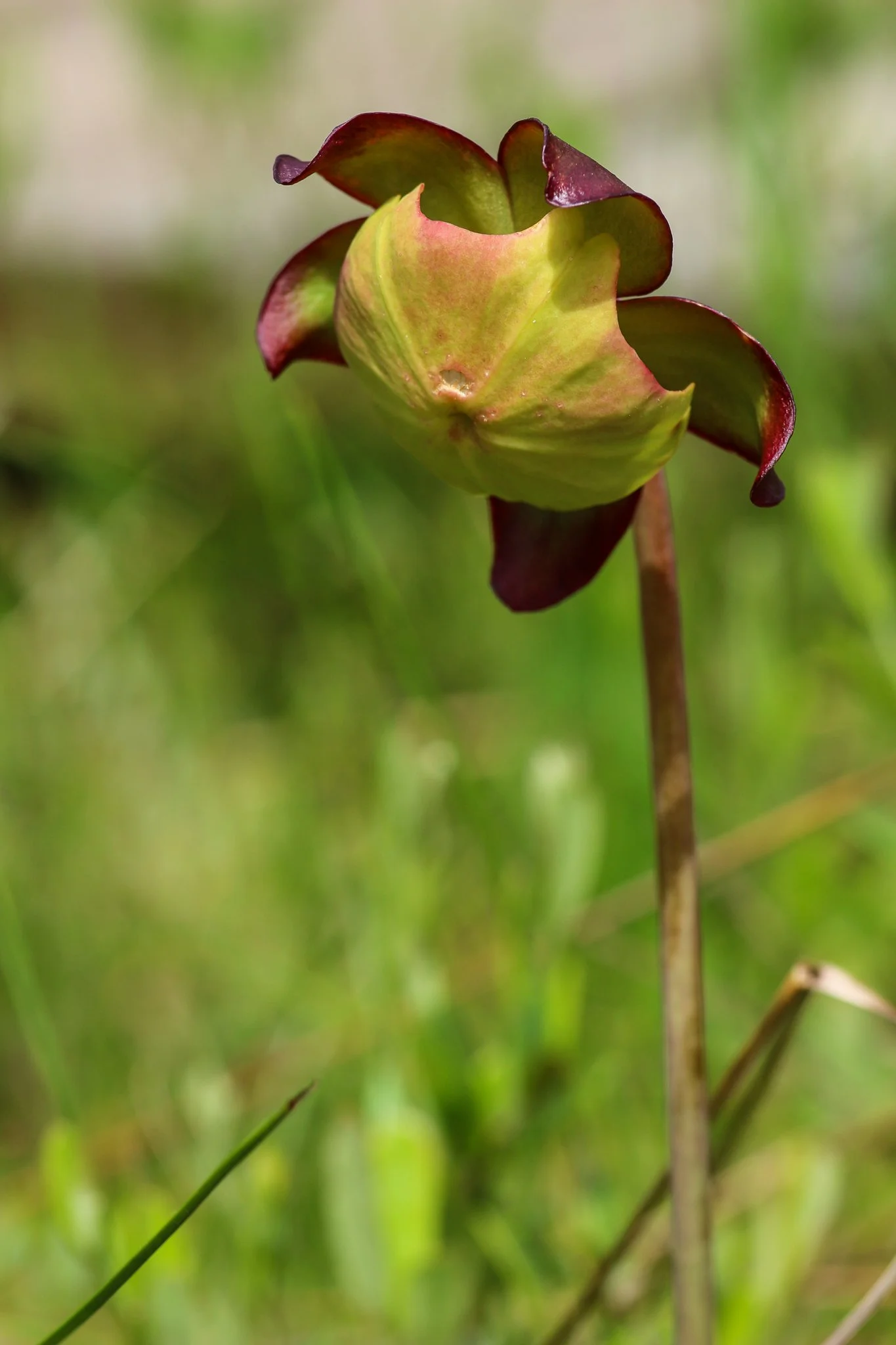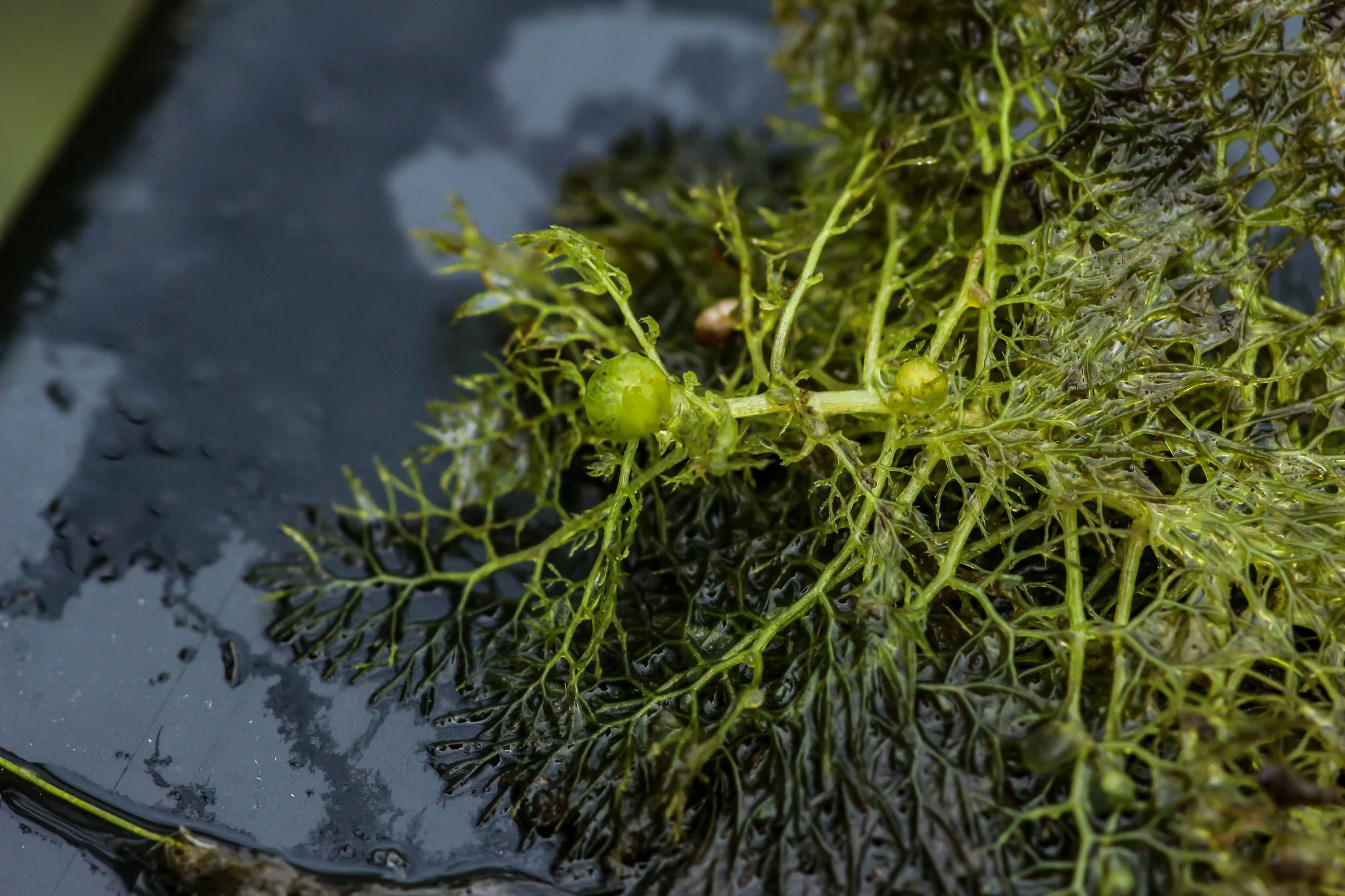3. Carnivorous Plants
When the word carnivore is brought up, many of us will think, lions, tigers, wolves, and other predators. The term carnivore doesn’t apply to only animals. There are carnivorous plants too!
In Minnesota, we have 14 species carnivorous plants that call Minnesota home. Of these 14 species they can be placed into the following categories in this post.
Purple Pitcher Plant
The purple pitcher plant can be found in north northeastern Minnesota in habitats called bogs. As the name suggests, they look and hold water like a water pitcher. They vary from a vibrant green to a red-purple.
The pitcher itself is the leaf of the plant. Along the lid, there is a sweet liquid that attracts the insects. The edge is slippery, which causes the insects to fall inside. Inside the pitcher, there are tiny hair like structures that point down. This makes it difficult for any insect to crawl up the side. The liquid inside the pitcher is mostly water that is collected when it rains. When an insect gets trapped and falls into the liquid, digestive juices begin to break the insect down. The plant is then able to absorb those nutrients from the insect.
Pitcher plants produce a flower like no other that I have seen in the wild. The flower is umbrella shaped and has a rubbery feel. It grows on a tall, skinny stalk, high above the rest of the plant. The goal of this design is to attract the pollinators to the flower and not the deadly pitcher part of the plant.
The flower of the Purple pitcher plant.
Sundew







There are a couple of different species of sundew found in Minnesota and can also be found in bog habitats. Round leaf sundew is the most common. They are so named because of the tiny liquid covered hairs on the leaves. These sticky fingers attract the insects and traps them. Once an insect is stuck, the appendages close around the insect and the plant begins digesting it.
Bladderwort
There are a variety of different species of bladderwort. The most common being, Common bladderwort, of course. Unlike the other two species we’ve covered, bladderwort can be found in slow moving or sedentary bodies of water. The best way to identify is by their flower which is a lovely yellow flower that sticks up out of the water on a stalk. Many flowers can be present at the same time.
The flowers of Bladderwort.
Underneath the surface, are the leaves and stems. These parts of the plant are floating. They don’t attach to the bottom via a root system. This gives them the ability to float around where a current or paddle takes them.
Their name comes from tiny sacs called bladders. There are minuscule hairs around the bladder. The bladder is under negative pressure. This means the pressure inside the bladder is lower than the pressure outside the bladder. When the hairs are triggered by tiny aquatic invertebrate, the bladder sucks in water and the invertebrate. This all happens in .0002 of a second.
The leaves, stems, and bladders of Bladderwort.
Butterwort
The one carnivorous plant that I haven’t found yet so no photos of mine for this section. This carnivorous plant can be found along the north shore of Lake Superior on rock outcrops. The plant gets its name due to the greasy, or buttery looking leaves. These leaves have a sweet liquid that attracts the insect and sticky hairs that trap them for digestion.
They have a purple flower that looks like a violet but more of a tube shape. The flowers are pollinated by hummingbirds.
